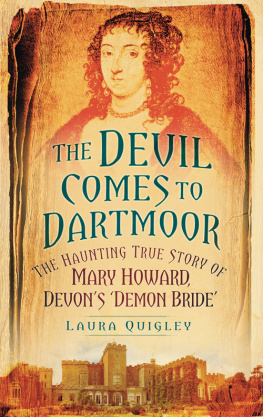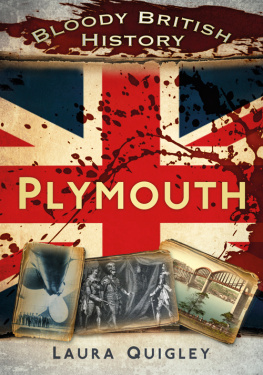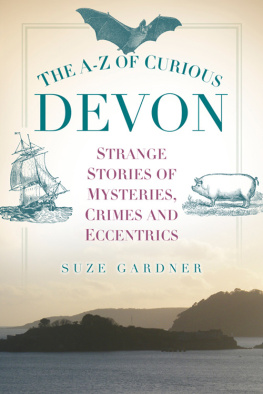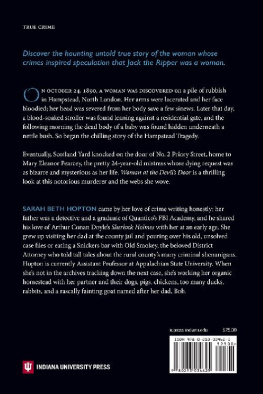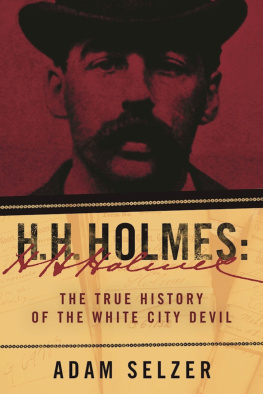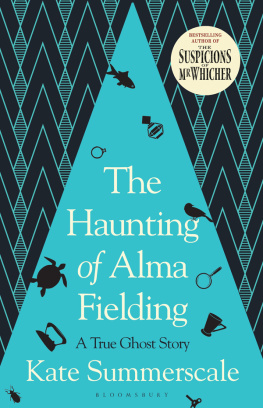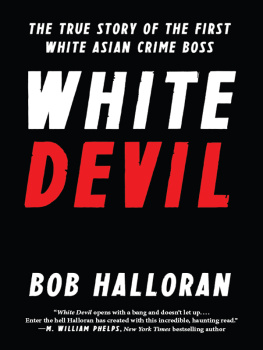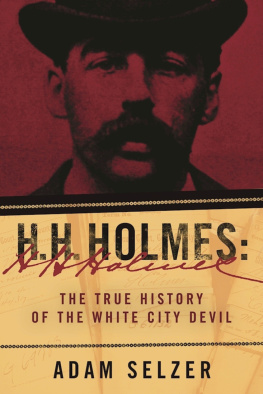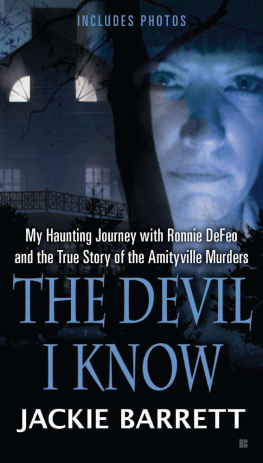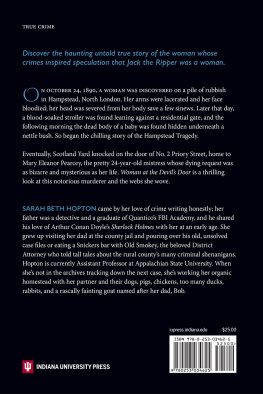
Id rather walk a hundred miles,
And run by night and day,
Than have that carriage halt for me
And hear my ladye say
Now pray step in, and make no din,
Step in with me to ride;
Theres room, I trow, by me for you,
And all the world beside.
Sabine Baring-Gould, 1908
For Bette
A great lady
A generous soul
May she enjoy the rest of her journey
M y sincere thanks go to my parents for reading early versions of this book and offering corrections and encouragement. The research started as a play called The Advocate which was first performed as a public reading in London, for Amnesty International thanks to all the cast and production team who made that possible. And I must thank my friend Lisa Tetley for all her wonderful, generous support for both the play and the book over all this time. Many others have also contributed and offered their support over the years, including, in no particular order: Ade Morris; Andrew Smaje; Mike Kaloski-Naylor; Ben Mitchell; Angela Sherlock; Danny Reilly; Colin Archer; David Lane; Robert Chapman and Dr Tom Greeves. Dr Greeves gave me some wonderful feedback on an early draft.
My family have had to support me through some difficult times over such an extended period, so huge thanks to them, and thanks to all those who so graciously contributed photographs and images. The Archive Staff at the Inns of Court; Plymouth and West Devon Record Office;West Sussex Record Office and Devon Record Office were just wonderful. I am particularly grateful to all those who have explored the story before me, from Mrs G. Radford and Amos C. Miller for the Devonshire Association, to more recently Gerry Woodcock and Kevin Hynes. I hope I have remembered you all in the References section and given you the credit you deserve. I am also indebted to Cate Ludlow at the History Press for all her hard work and advice, and for believing in the project.
My final thanks goes to everyone who is researching their family and local histories your efforts and contributions have maintained so many research services that otherwise might have failed for lack of funding, and have recently made available so much new material. It is both humbling and fascinating to be involved in such an enormous endeavour on the part of so many people. I am delighted to see communities preserving their own histories in a continuum of study, investigating why things are as they are now, and how things have changed. Remembering previous generations is so essential to understanding ourselves. The efforts of those individuals discovering, exploring and translating parish and other records, and making them available online for everyone to access should be celebrated it is a terrific achievement and long may their generous and inspirational work continue.
I do hope that everyone enjoys the book, finished at last. All mistakes are my own and any comments and corrections are gratefully and graciously received.
My journey ends here.
Laura Quigley, 2011
CONTENTS
:
The Courtenays of Powderham
The Cutteford and Halse Families
The Grenville Family
The Howard Family of Saffron Walden
T he seventeenth century was a turbulent era in European history, a time of global exploration, epidemics and, it seems, perpetual conflict. In Britain in the 1640s, there were a series of very well-documented battles which are collectively called the English Civil War and I, like most others, have retained this name for clarity. However, these wars destroyed lives across Scotland, Wales, Ireland, England and parts of France, and imported mercenaries from all over Europe. Thousands of Scots were killed or enslaved and sent to the New World in the midst of this English Civil War, and the brutal events did not end with the execution of King Charles I. Their impact was felt across Britain and Ireland and into Europe for many years, and I am sorry not to be able to present more of the story in this book. I have concentrated here on characters in Devon and must leave those other stories for better writers and scholars than I.
It could be argued that this English Civil War was led by opposing factions in London, the English gentry battling amongst themselves for supremacy; it was English in that sense, but if ever a war was incorrectly named, this one was. Some historians are now referring to these wars as the British Civil Wars or the Wars of the Three Kingdoms, titles which are perhaps more appropriate, but the term English Civil War still predominates, so I use it here merely for continuity.
The calendar year used to start in March, so, like many writers, I have amended some year dates for a modern audience, and to maintain a consistency with other histories. For example, January 1643 in their calendar is translated to January 1644 in ours, while dates from April to December remain unchanged.

England in the early seventeenth century was a very different country, before de-regulation of the markets, before universal suffrage, before national health care systems, and before law and order was systematically co-ordinated. Corruption was expected, land ownership was the signifier of success, and religion was an essential aspect some might even say the defining characteristic of any community. Yet in exploring the lives of the people of seventeenth-century Devon, I have been surprised and at times shocked by their modern attitudes and thinking, by the similarities with modern-day Britain, by the ideas they conceived, thoughts would still be influencing the world some 400 years later.
Essentially this book is a love story, and like all great love stories, I make no apologies for the characters flaws. They were human beings just like us, often overwhelmed by emotions and ambitions, trying to do their best in a world that was descending into madness.
At Fitzford, Tavistock
Mary Fitz
Sir John Fitz and Bridget Courtenay (her parents)
Sir Alan Percy, Sir Thomas Darcy, Sir Charles Howard and the villain of the piece Sir Richard Grenville her husbands
Mary Vernon (ne Howard), Richard Grenville, and Elizabeth Lennard (ne Grenville) her children
At Walreddon, near Tavistock
George Cutteford, his wife Grace, and their children, George, John, Eleanor, Grace, and Anne
Richard Halse and his family
George Halse/Howard, son of Mary Fitz and George Cutteford (who became a ward of Sir Francis Trelawney of Venn)
At Powderham Castle, near Exmouth
Sir William Courtenay, Earl of Devon
Sir Francis Courtenay (his son)
Sir William Courtenay (his grandson)
At Audley End, Saffron Walden
Sir Thomas Howard, Earl of Suffolk
Theophilus Howard (his son), also living at Lulworth Castle in Dorset
James Howard and George Howard (his grandsons)
In Oxford in 1644
King Charles I
Prince Charles, Prince of Wales; Prince James, Duke of York (his sons)
Edward Sackville, Earl of Dorset, Lord Chamberlain to the King (also with houses at Knole in Kent, and Withyham in Dorset)
Sir John Maynard, once attorney to King Charles I
In Exeter, 1644
Sir John Berkeley, Royalist Governor of Exeter
Chapter One
M ary Howards ghost, it is said, haunts the heart of Dartmoor. Some say they have seen her spectral form at the gatehouse of her old home in Tavistock; others that they have glimpsed a mysterious coach travelling across the moors. The spectre of her dog, with demonic eyes, has been seen running along the dark lanes to Okehampton Castle. The stories have been told over and over in the old pubs in Tavistock and Okehampton, perhaps as a warning to unwary travellers or to hurry the drunks off home to bed. Even the famous lyricist and historian Sabine Baring-Gould
Next page
